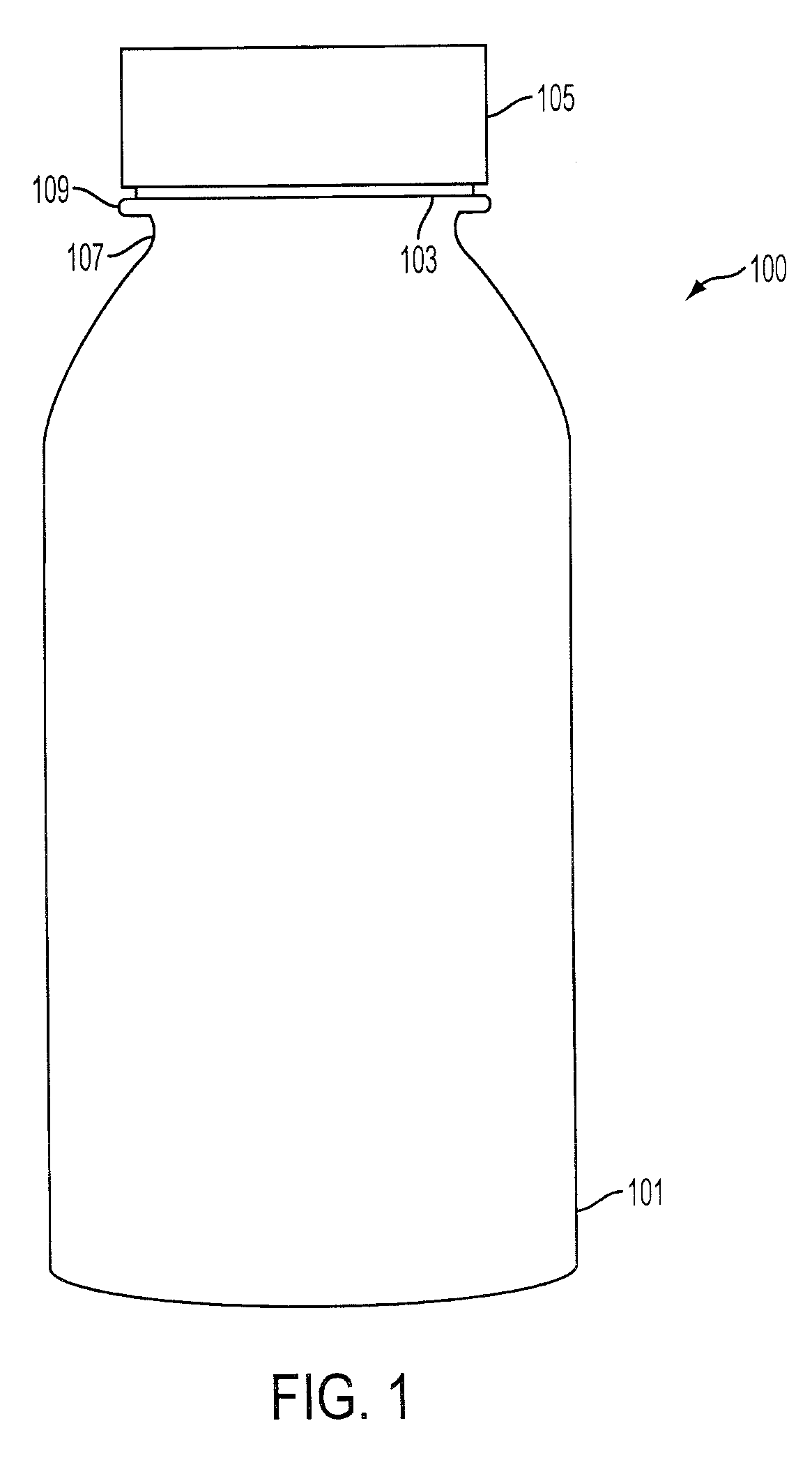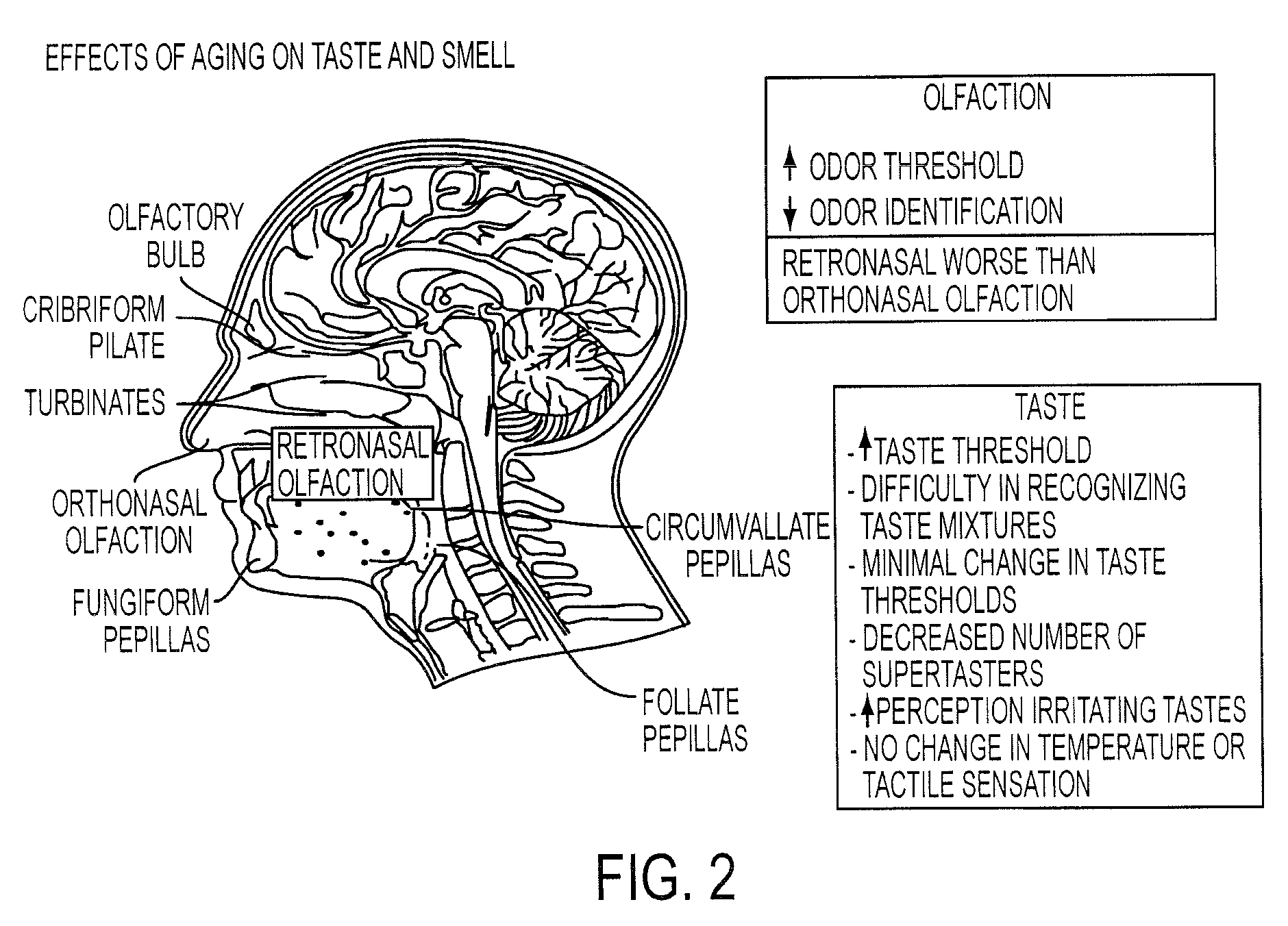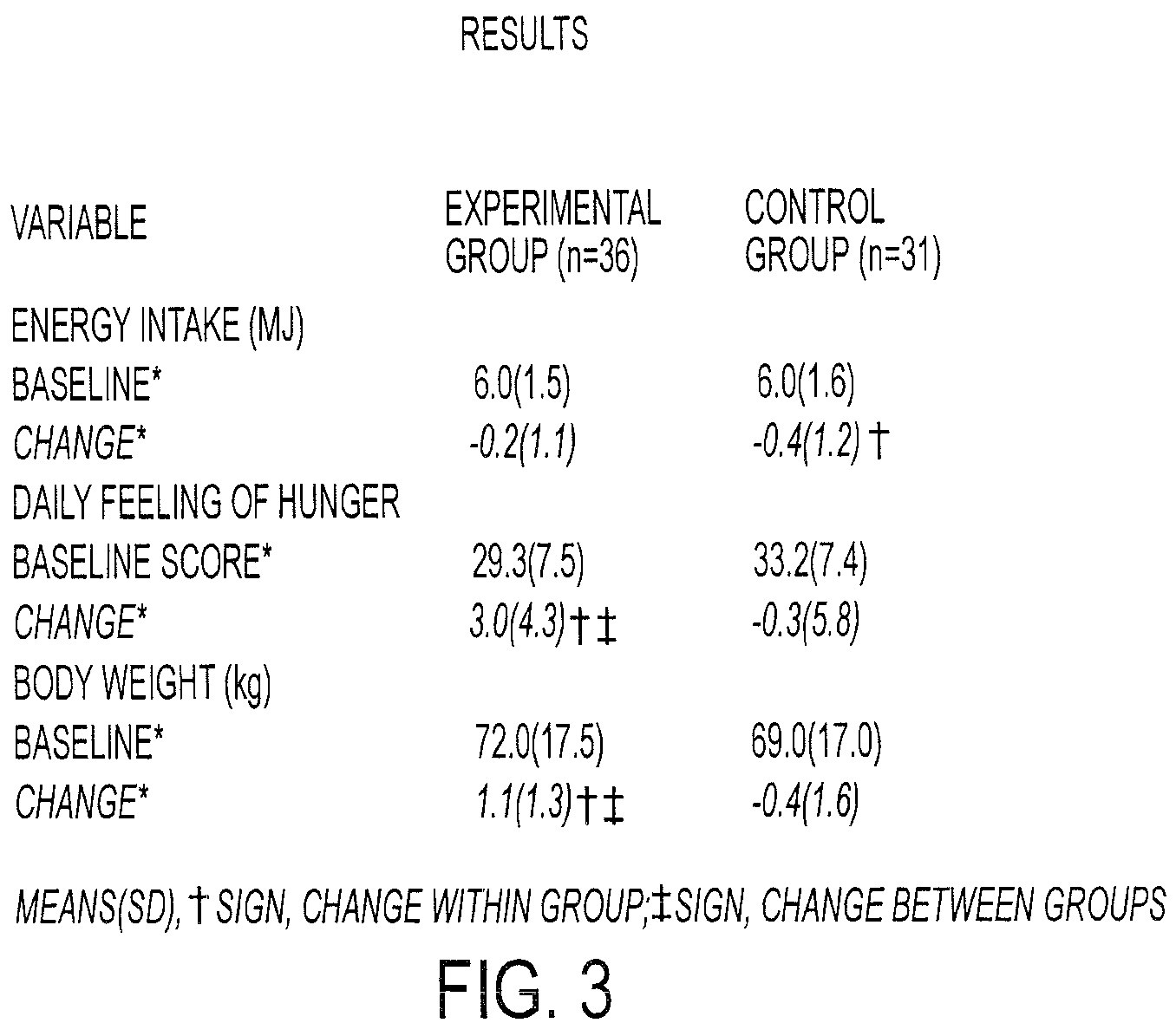Systems for and Methods of use of Therapeutic Nutrition for the Management of Age-Associated and Age-Specific Health Conditions of the Elderly
a technology for applied in the field of system and method of use of therapeutic nutrition for the management of age-associated and age-specific health conditions of the elderly, can solve the problems of increasing mortality, complicating the therapeutic management of cardiovascular disease, diabetes and other metabolic based disorders, and increasing the amount of body fat mass, so as to achieve effective therapeutic specific nutritional support
- Summary
- Abstract
- Description
- Claims
- Application Information
AI Technical Summary
Benefits of technology
Problems solved by technology
Method used
Image
Examples
Embodiment Construction
)
[0041]Disease specific nutrition or nutrition provided to have therapeutic purpose is an important adjunctive care regimen for the management of age specific and age associated health. The method of age-specific health management via the method and approach of such nutritional regimens differs from nutritional support methods historically implemented. Age specific changes compromising health are preferably managed with the use of very specific nutrient compositions as opposed to a general approach where one nutritional formula is used for all consumer groups.
[0042]Specifically, nutritional formulas or blends are chosen to correspond to the needs and requirements of elderly populations instead of selecting formulas designed for use by persons of any age. For purposes of this disclosure, a human is defined as “elderly” if they are at least 50 years of age. In an embodiment, therefore, the supplements and regimens discussed herein are intended for use with a human of 50 years of age o...
PUM
| Property | Measurement | Unit |
|---|---|---|
| Mass | aaaaa | aaaaa |
| Fraction | aaaaa | aaaaa |
| Volume | aaaaa | aaaaa |
Abstract
Description
Claims
Application Information
 Login to View More
Login to View More - R&D
- Intellectual Property
- Life Sciences
- Materials
- Tech Scout
- Unparalleled Data Quality
- Higher Quality Content
- 60% Fewer Hallucinations
Browse by: Latest US Patents, China's latest patents, Technical Efficacy Thesaurus, Application Domain, Technology Topic, Popular Technical Reports.
© 2025 PatSnap. All rights reserved.Legal|Privacy policy|Modern Slavery Act Transparency Statement|Sitemap|About US| Contact US: help@patsnap.com



